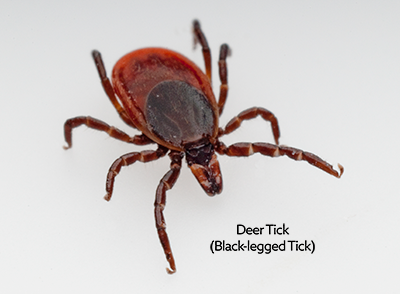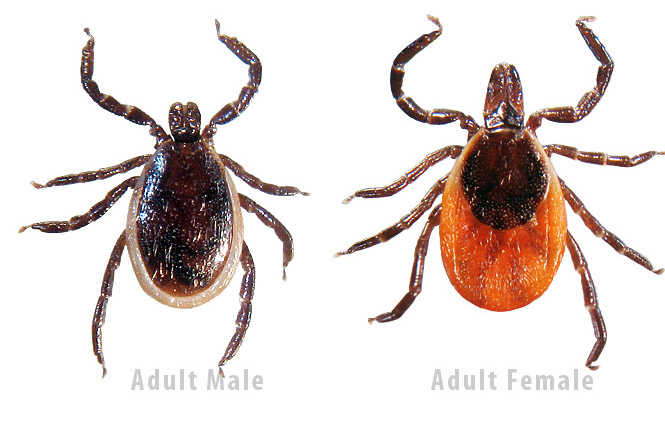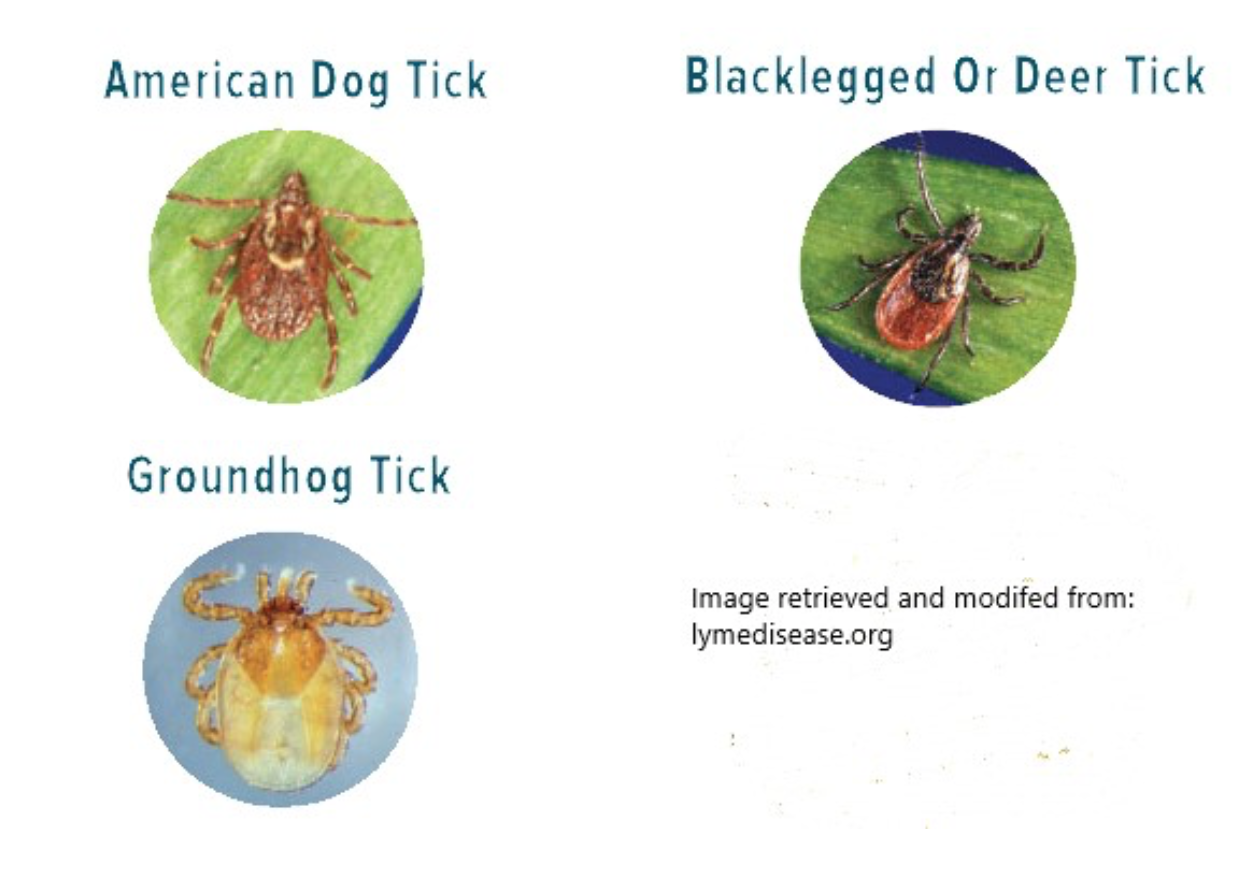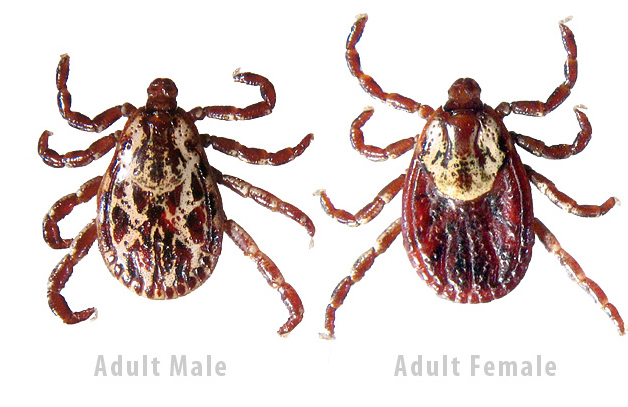tick life cycle canada
Ticks begin questing looking for a blood meal when temperatures reach 4oC and higher. Now let us look at their life cycle to get a better understanding.

Western Blacklegged Tick Tickencounter
The majority of hard ticks require three different hosts to complete their development.
. The tick requires a blood meal to evolve into each stage of its life. Ticks are found in many areas across Canada including southern Ontario. The brown dog tick also known as the kennel tick is found through most of the United States and Canada.
The female tick then leaves the host and. Eggs hatch into six-legged larvae and overwinter in the larval stage. Adult females drop off the third host to lay eggs after feeding usually in the fall.
Hoary Tick-trefoil Canada Tick-clover. That gives them plenty of opportunity to pick up a pathogen that they can later transmit through their saliva when they bite someone. Dermacentor variabilis the American dog tick is a large reddish-brown ornate hard tick.
These stages are egg larvae or seed tick nymph and adult. Egg six-legged larva eight-legged. A climate-based model for tick life cycle.
Female adults die after egg-laying is complete. They can be found across the eastern half of the United States and into southern portions of. An in nite system of di erential equation approach.
After hatching the newly-born tick larva requires a blood meal to advance to the next stage of life as a six-legged nymph. Unlike the other species of ticks its life cycle allows it to survive and develop indoors which means it can establish itself in colder climates. Ticks have 4 distinct stages to their life cycle.
Three-host ixodid ticks have a life cycle that usually spans three years although some species can complete the cycle in only two years. Generally adult female hard ticks breed while on the host animal and then drop to the ground to lay eggs. 1 The Egg Stage 1 After the adult female tick has acquired a proper blood meal she mates with the adult male tick leaves the host and searches for a suitable spot to lay her eggs.
Unlike the other species of ticks its life cycle allows it to survive and develop indoors which means it can establish itself in colder climates. All ticks whether they are hard or soft undergo four developmental stages namely egg larva nymph and adult. Ticks are not able to lay eggs directly on a host they must first detach.
The First Stage egg The adult female tick first fulfills a proper blood meal then the process of mating occurs between an adult male and adult female tick. The tick feeding process makes ticks very good at transmitting infection. The lifecycle of Ixodes pacificus ticks generally lasts three years.
Depending on the tick species and its stage of life preparing to feed can take from 10 minutes to 2 hours Ixodes Life Cycle The lifecycle of blacklegged ticks Ixodes scapularis and Ixodes pacificus generally lasts two yearsDuring this time they go through four life stages. The life cycle of a tick is completed after four stages namely egg larva nymph and adult it requires more than a year to complete a full life cycle. Special camping protection packages.
Egg larva nymph and adult. This tick feeds on dogs but rarely bites people. At this stage of life these small ticks about 18-inch in size have six legs instead of the eight legs they will have later on in their lives.
The brown dog tick also known as the kennel tick is found through most of the United States and Canada and can transmit Ehrlichia. Ixodes scapularis the black-legged deer tick which is the primary vector for Lyme disease has a four-stage life cycle and a lifespan of about two years. A tick goes through a similar life cycle as other arthropods as the metamorphosis starts at the egg stage moves to larval stages then to the nymphal stage and finally to adult.
This tick feeds on dogs but rarely bites people or cats. Egg Larvae Nymph and Adult. Blacklegged ticks are common species and the primary vectors for Lyme disease Anaplasmosis Babesiosis and other illnesses.
Stages in the Life Cycle of Ticks. Life Cycle of Ticks. The blacklegged tick or deer tick Ixodes scapularis is one of the most important ticks in the Northeast for human and animal health.
Egg larvae nymph and adult. After the eggs hatch the ticks must have a. Ticks come in various sizes and shapes based on the stage of life they are at.
Prairies along shores along roads railroads open woods. Eggs are not dangerous and. Ticks have 4 life stages.
Most of the ticks that carry disease live two to three years and feed on the blood of multiple hosts across their four-stage life cycle which progresses from egg to larva to nymph to adult. It begins in early spring when adult females lay. Average to moist sandy or rocky soil.
Ticks can transmit disease such as Lyme to animals and people when they take a blood meal. The ticks need a new host at each stage of their life. Fabaceae Pea Life cycle.
The eggs hatch and six-legged larvae emerge from the eggs. Each stage of the life cycle requires a blood meal to develop and eggs typically hatch into six-legged larvae after a period of four to 10 days. Inside or out ticks love a warm environment to lay their eggs.
Two of the most common types are Black Legged ticks formerly know as the Deer Tick and the American Dog tick. Lets review the life-cycle of a tick. In Canada it is found from Alberta east to Nova Scotia and has increasingly pushed west and north in the last decades.
After a two-year life cycle a female tick can lay thousands of eggs. Black Legged ticks are the common vector for Lyme Disease. Female ticks lay thousands of eggs on the ground which then hatch into larvae known as seed ticks.
Ad Natural pest control for people pets and properties. Its important to be familiar with this life cycle to get rid of ticks from your lawn and landscape and prevent tick bites. There are dozens of different tick species that are commonly found across Canada.
Ad Test your tick for Lyme disease. However they can lay eggs just about anywhere else and they do. 2 to 6 feet.
Ticks have a two year life cycle. Dermacentor variabilis is a three-host-tick with each stage of the life cycle larvae nymphs and adults feeding on a separate host. Bundle for more savings.
Cyrine Chenaouia Slimane Ben Mileda Mamadou Sadio Ndongobd Papa Ibrahima Ndiayebcd Mourad Rekikf Mohamed Aziz Darghouthe aInstitut Pasteur de Tunis Universit e de Tunis el Manar 1002 Tunis Belv ed ere Tunisia bLaboratoire dInformatique et de Math. In early spring ticks begin to lay their eggs. During this time they go through four life stages.
University laboratory FASTEST results no kit. The Ixodes scapularis ticks that transmit Lyme disease in Eastern regions of the United States and Canada have a two-year life cycle. During this development ticks go through four stages of life.

Deer Tick Identification Tips Pa Tick Research Lab

Ticks In Dogs Vca Animal Hospital

Ticks Lyme Disease Thunder Bay District Health Unit

Tick Information Facts Environmental Pest Control

Keep Your Family Safe This Summer By Knowing All About Ticks Tick Prevention Tick Safety And How To Safely Remove Ticks On T Ticks American Dog Ticks On Dogs

Alberta Ticks Cling On Through Wintry Weather Cbc News

Ticks Lyme Disease And Our Pets St David S Veterinary Clinic

What To Do When You Re Bitten By A Tick 7 Steps Cbc News

Update Protecting Yourself Your Dog From Ticks Toronto 2020 Royal York Animal Hospital

How To Grow Mint From Cuttings For An Endless Supply Lyme Disease In Dogs Lyme Disease Ticks
Tick Control And Disease Prevention Deerbusters Canada

Tickencounter Resource Center Tick Identification Dermacentor Variabilis American Dog Tick Ticks American Dog Ticks On Dogs

Why You Don T Need To Fear Ticks Lurking In Your Christmas Tree Cbc News





